-
Car Reviews
- All reviews
- Midsize SUVs
- Small cars
- Utes
- Small SUVs
- Large SUVs
- Large cars
- Sports SUVs
- Sports cars
- Vans
Latest reviews
- Car News
-
Car Comparisons
Latest comparisons
- Chasing Deals
Mazda’s all-new CX-80 will launch in Australia late this year, adding a second seven-seat SUV to the family, though in a more compact size than the flagship CX-90
Mazda’s new large-architecture platform is, as promised, spawning a whole family of models powered by electrified combustion powertrains for multiple global markets. In the US, there will be the CX-70 and CX-90 large five- and seven-seat twins, while Japan and Europe will only see the smaller CX-60 and this new extended-wheelbase CX-80.
Australia’s strong demand for Mazda products, however, will result in a unique local line-up offering all four CX SUV models in the same showroom by the end of 2024.
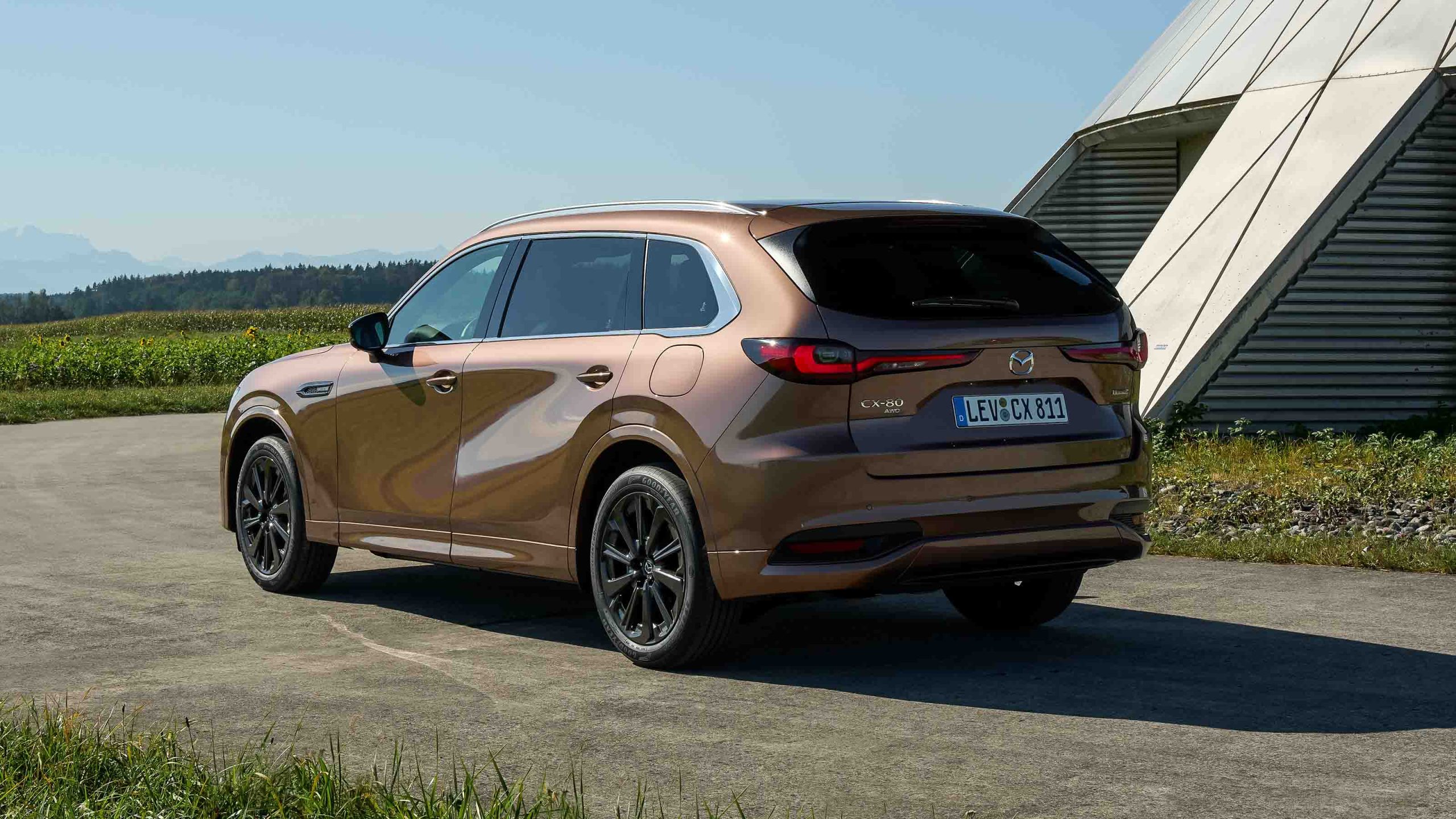
The five-seat CX-70 will be the last to arrive, beaten by this new-generation CX-8 replacement called CX-80. And much like the CX-8 (which was essentially a CX-5 L, with a lengthened wheelbase and rear end), the CX-80 combines the front half of a CX-60 with a longer and more accommodating back half.
We had a first drive of this new model at its international launch in Germany to get a better understanding of how it’s going to fit into Mazda Australia’s growing line-up and what is different about it.
Three CX-80 variants will be coming to Australia, matching the existing CX-60’s engine line-up. That includes a choice of 3.3-litre turbocharged straight-six engines fed by either petrol or diesel, and a 2.5-litre four-cylinder petrol paired to a plug-in hybrid system.
As Mazda believes the CX-80 PHEV will be the most popular option in Australia, that’s the variant we focused on.
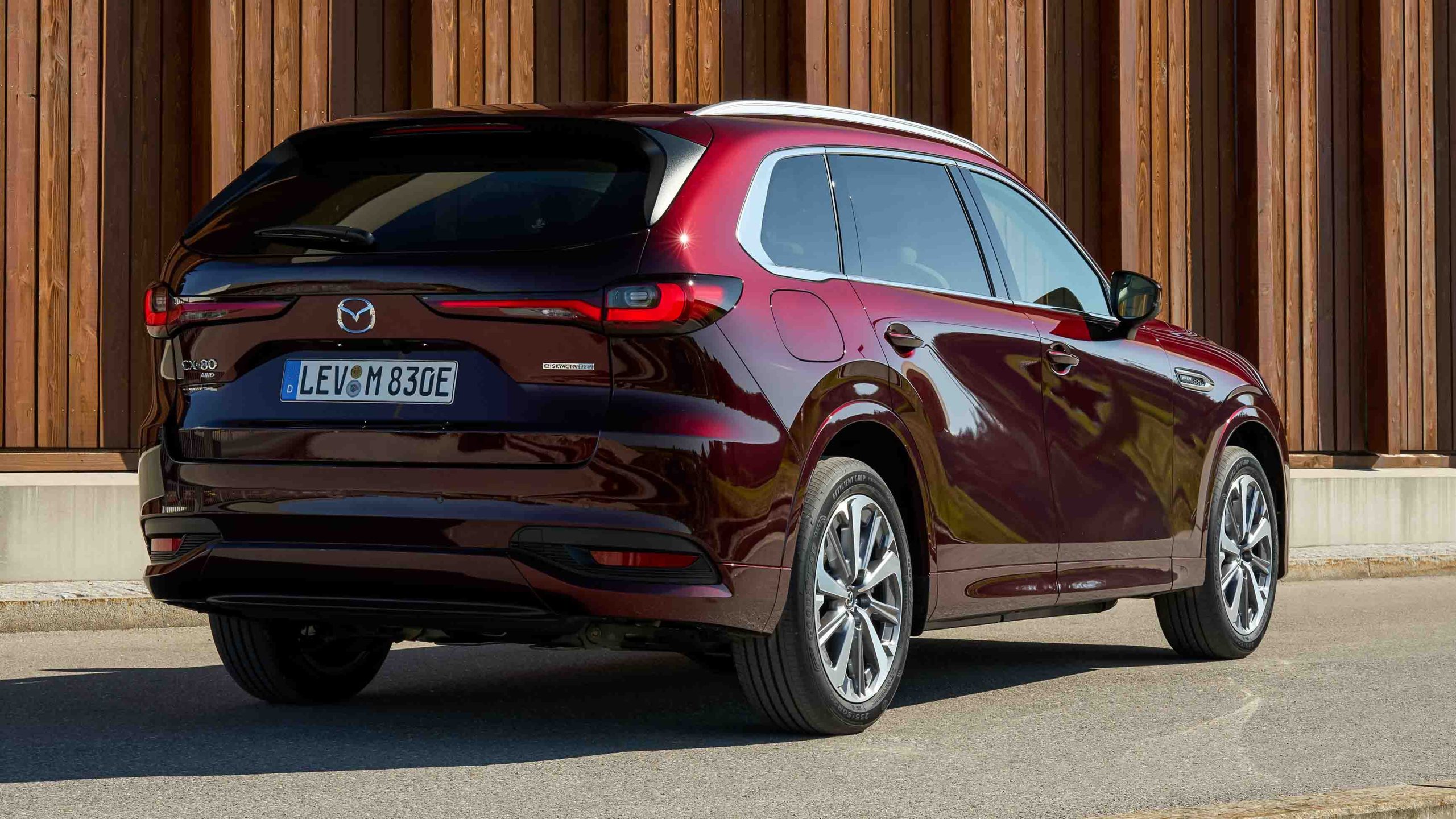
It has a 17.8kWh lithium-ion battery and a 129kW electric motor integrated into the transmission for impressive combined outputs of 241kW and 500Nm, or a pure EV mode with 129kW/270Nm and a range of up to 60km.
Regardless of the engine, all are paired with an eight-speed automatic transmission and Mazda’s i-Activ all-wheel-drive system.
At the more luxurious end of the spectrum, a more premium optional Homura interior will be offered, adding a dark interior theme with high-quality leather and contrasting patterns on the seats and dash, paired with matching wood.
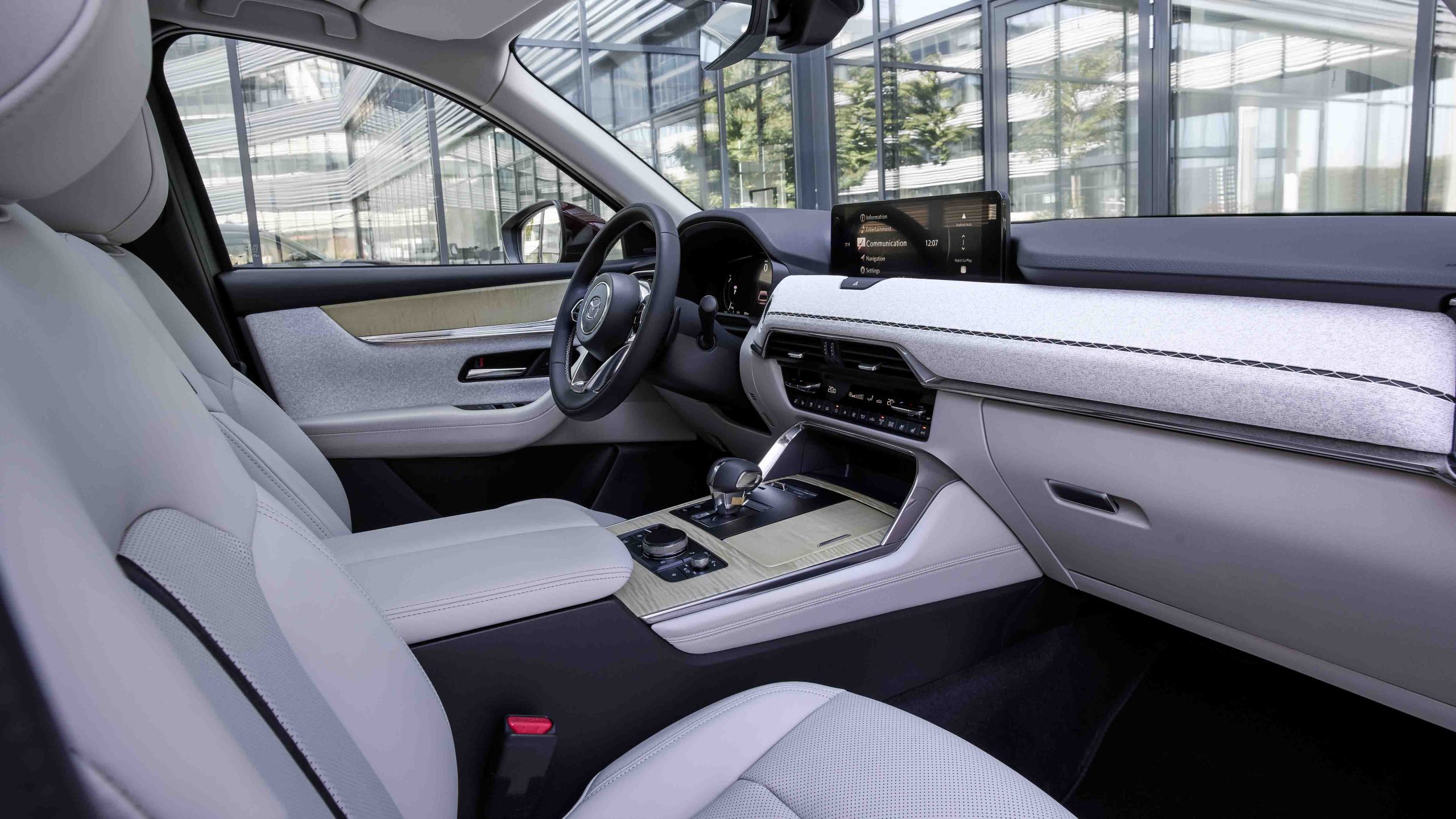
It also adds a large panoramic tilt-and-slide sunroof which may be also offered as a standalone option. The lighter-toned Takumi option is unfortunately not being offered in Australia.
Model line-up specification will be detailed closer to the CX-80’s launch at the end of the year, though expect a similar range to the CX-60 which is offered in three grades – Evolve, GT and Azami.
Pricing is also yet to be determined but a starting point of just under $60,000 is understood to be a reasonable speculation.
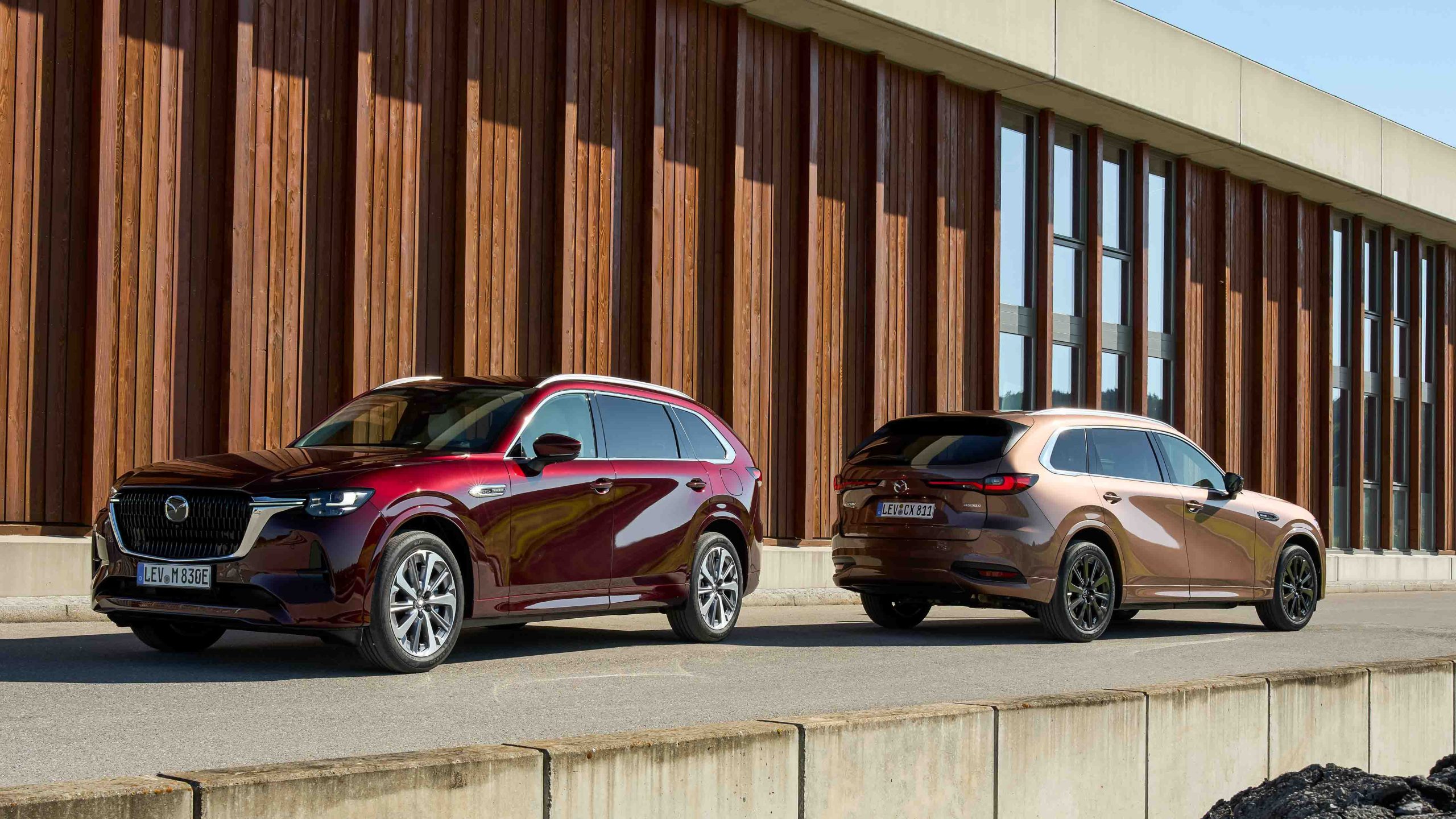
All versions get three rows of seating, including a standard seven-seat configuration or an optional ‘captain’s chairs’ six-seat arrangement.
The six-seater has two more luxurious seats in the second row – separated by a centre console containing more storage, cupholders and armrests to match the level of comfort in the front row.
There’s a second six-seat version available in Europe minus the centre console, which allows occupants to ‘walk’ through to the third row, which is a really convenient loading option and would probably work well for many families, though it won’t be available in Australia.
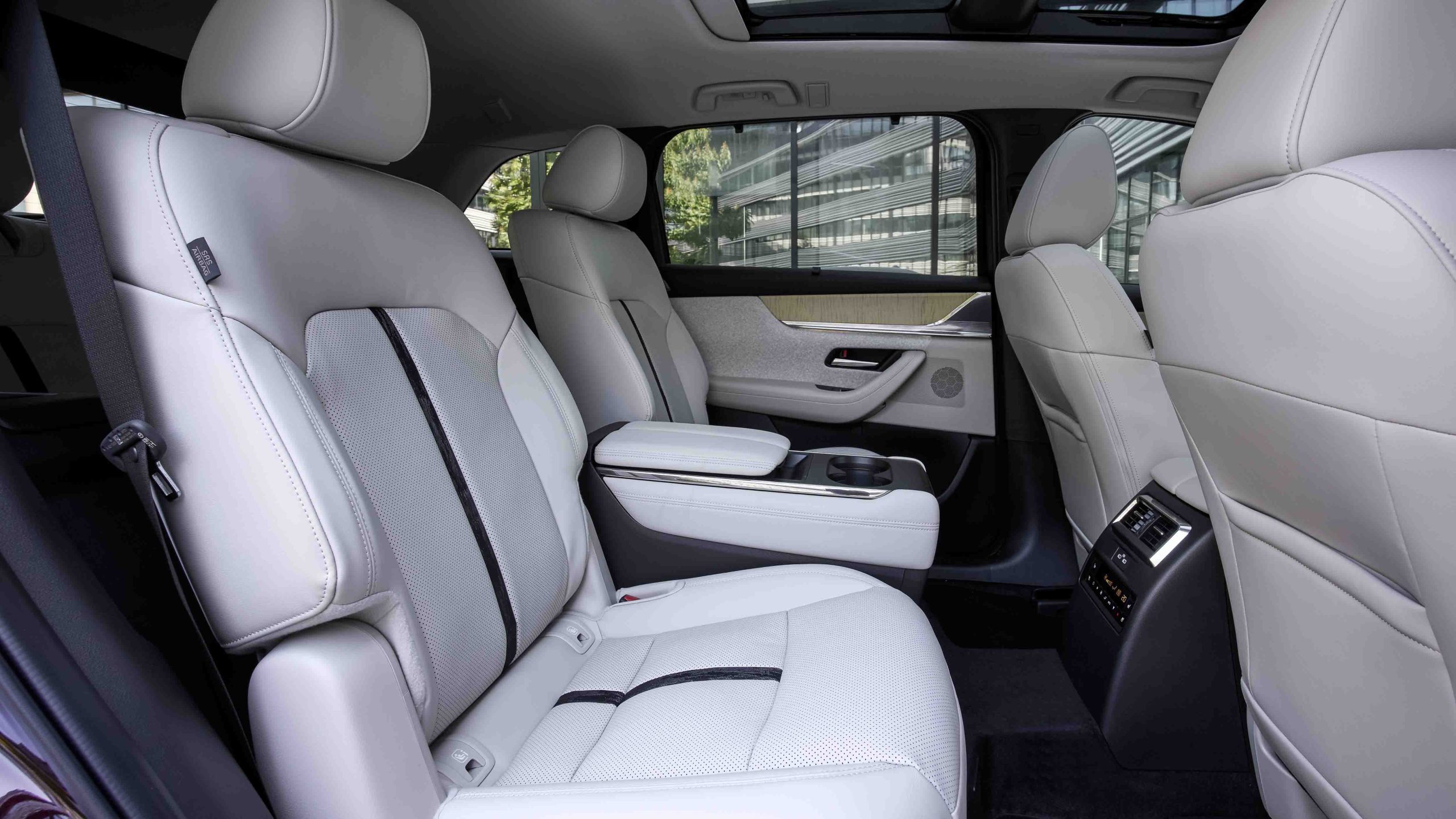
Second-row passengers also have their own climate-control panel complete with physical switches and a digital display. Third-row occupants have USB-C charging and their own small bottle holders.
Our test car rolled on 20-inch alloy wheels with Goodyear SUV tyres and was dressed up in a lovely shade of Artisan Red, although the hero colour (Melting Copper) looks absolutely stunning in European sunlight.
Let’s start with the known stuff. Mazda’s fresh straight-six engines have been strong performers in both the CX-60 and CX-90 SUVs, with excellent power and torque delivery, as well as fuel efficiency in both diesel and petrol configurations – and that doesn’t change in the CX-80.
The same goes for the plug-in hybrid, which is much faster than the diesel six in particular, with the boost of electric torque making it feel livelier and more eager.
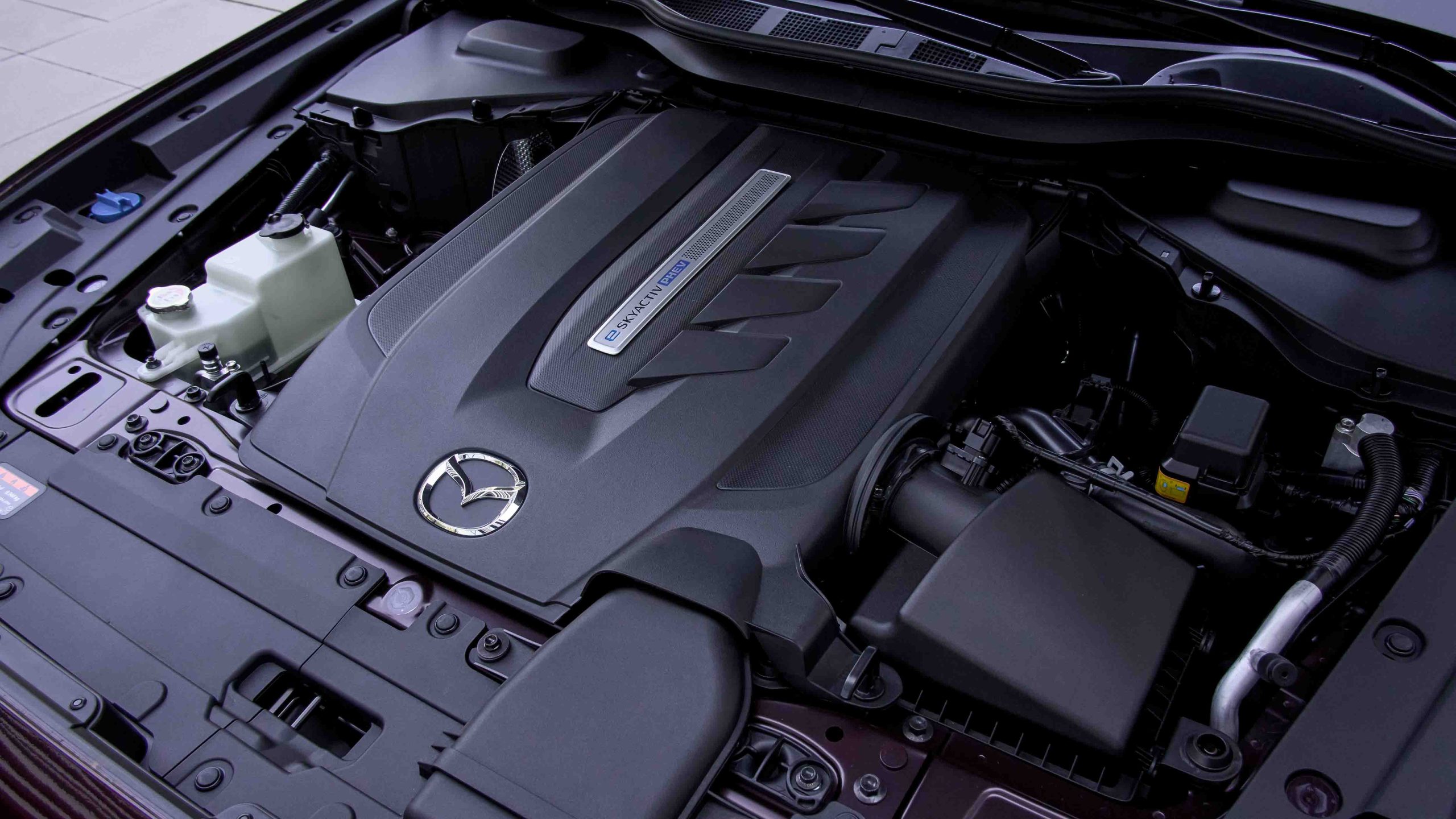
Mazda quotes a combined fuel economy figure of 1.6L/100km but on a longer run with the battery charge exhausted, our test car managed mid-to-high sixes.
We also rate the pairing of an eight-speed automatic transmission highly, and the clever torque-converter-replacing clutch system works with urgency and responsiveness. There’s a little bit of noise from the electromechanical components but not offensively so, and it’s only audible because the CX-80’s cabin is so quiet at low speeds.
The engine is a refined cruiser, though acceleration is strong and it makes a good noise when working harder. The PHEV’s regenerative brake-pedal feel is nicely progressive and even preferable to the full-combustion versions.
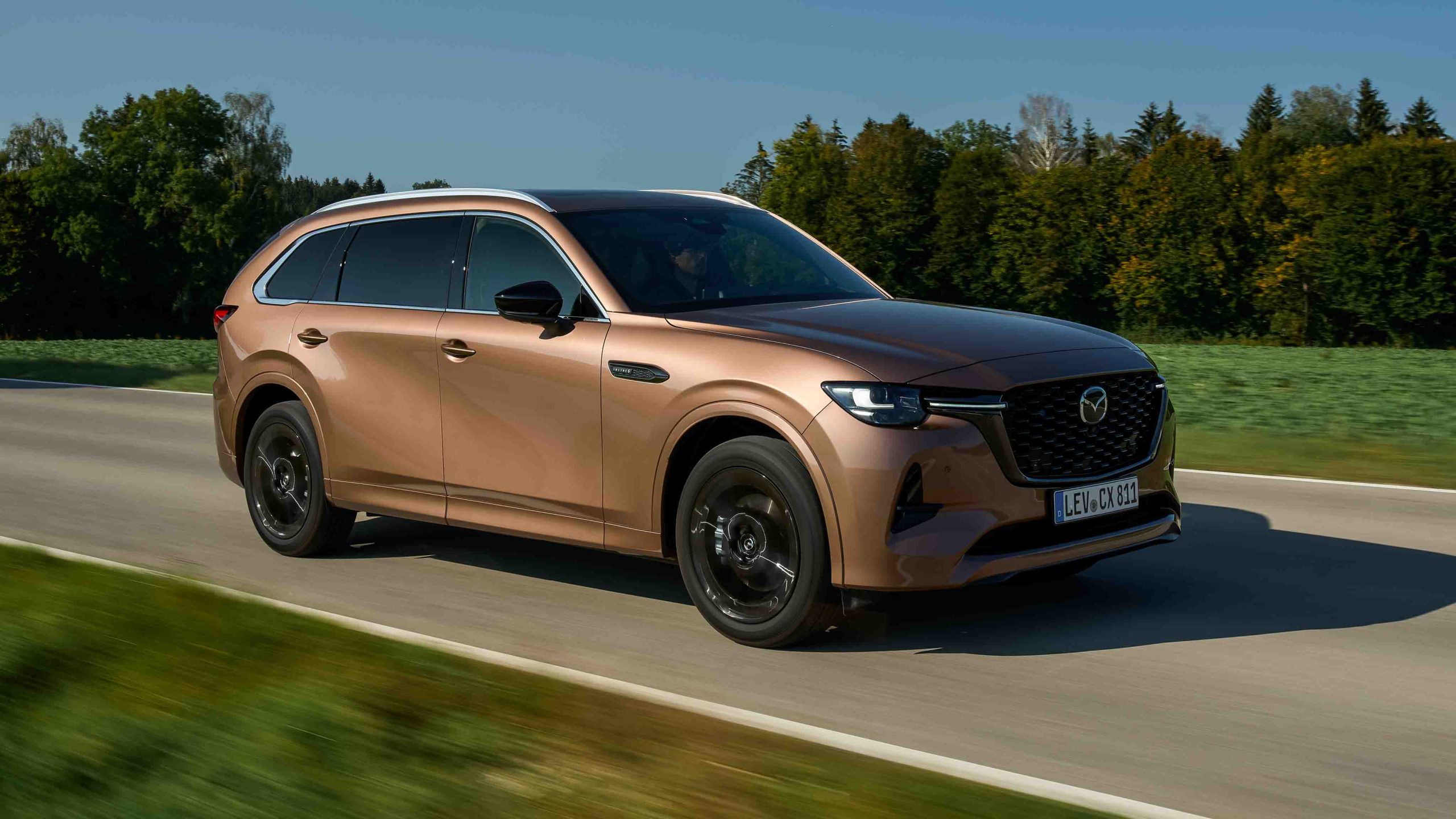
At higher speeds there were a few curious vibrations creeping in. One felt like a rear wheel was out of balance, while the other was a strange buzzing vibration from the steering wheel which felt a little like a lane-departure warning or fine-surface corrugation, but wasn’t.
Neither anomalies have been detected in Australian testing of models on the same platform so let’s hope both are limited to these early-production CX-80s in Europe.
The elephant in the room is the CX-80’s chassis which, if simply a re-run of the initial CX-60 and CX-90 tuning, would miss an opportunity to be significantly better. Thankfully, Mazda has been fully receptive to criticism and the CX-80 has an improved ride.
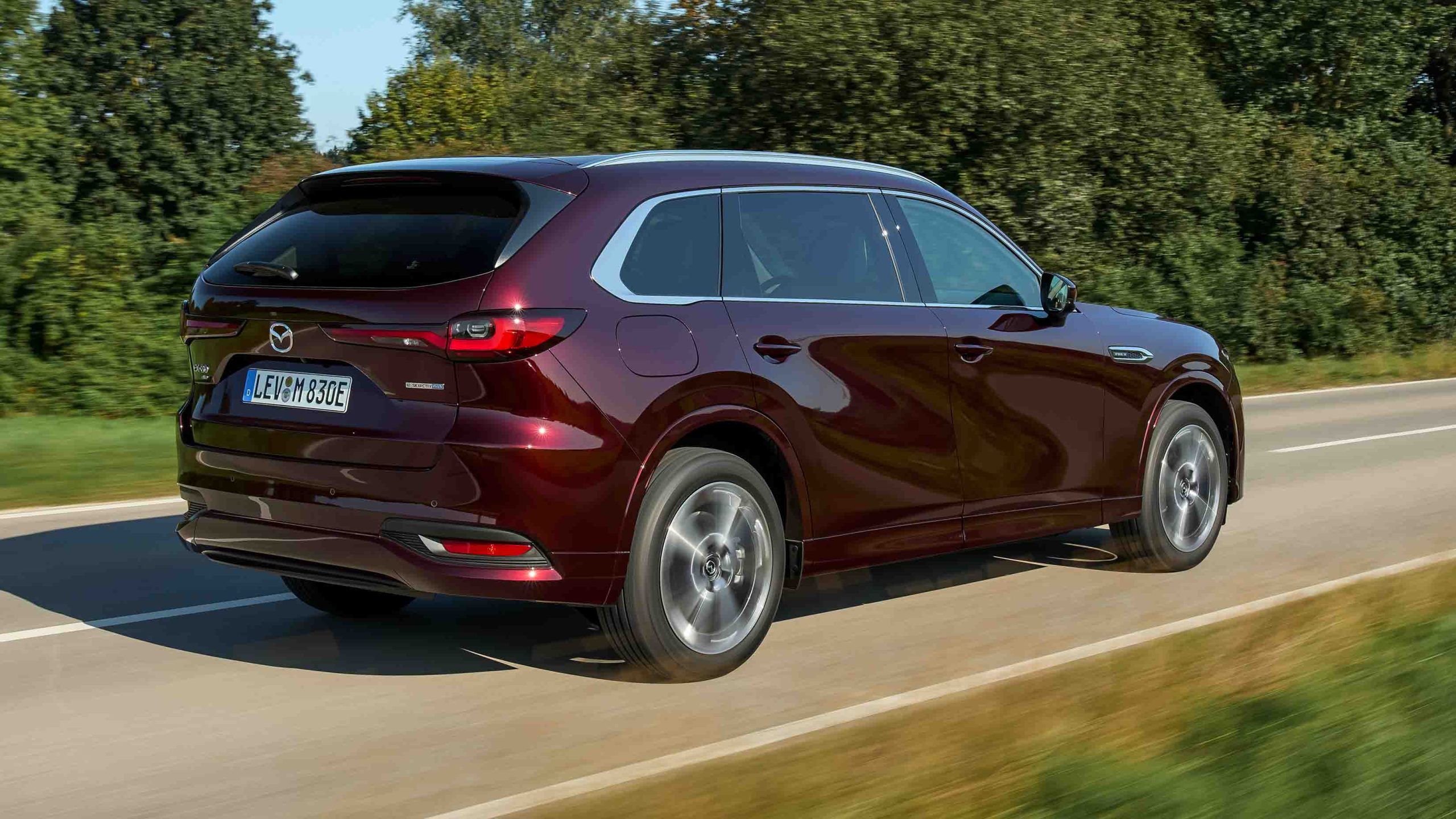
The rear anti-roll bar has been deleted, the rear springs have been softened and the dampers uprated in an attempt to tame the sudden and overly firm ride. An improvement in the diesel is subtle, with a bit of fussiness still remaining over finer imperfections, if demonstrating a more refined nature over larger bumps and bigger hits.
The PHEV, however, is better still, most likely due to its heavier kerb weight.
There’s still a little stiffness in the secondary ride, but the primary ride is noticeably better at dealing with large bumps and the CX-80 displays the most compliant ride quality yet in any Mazda SUV from the large-architecture family.
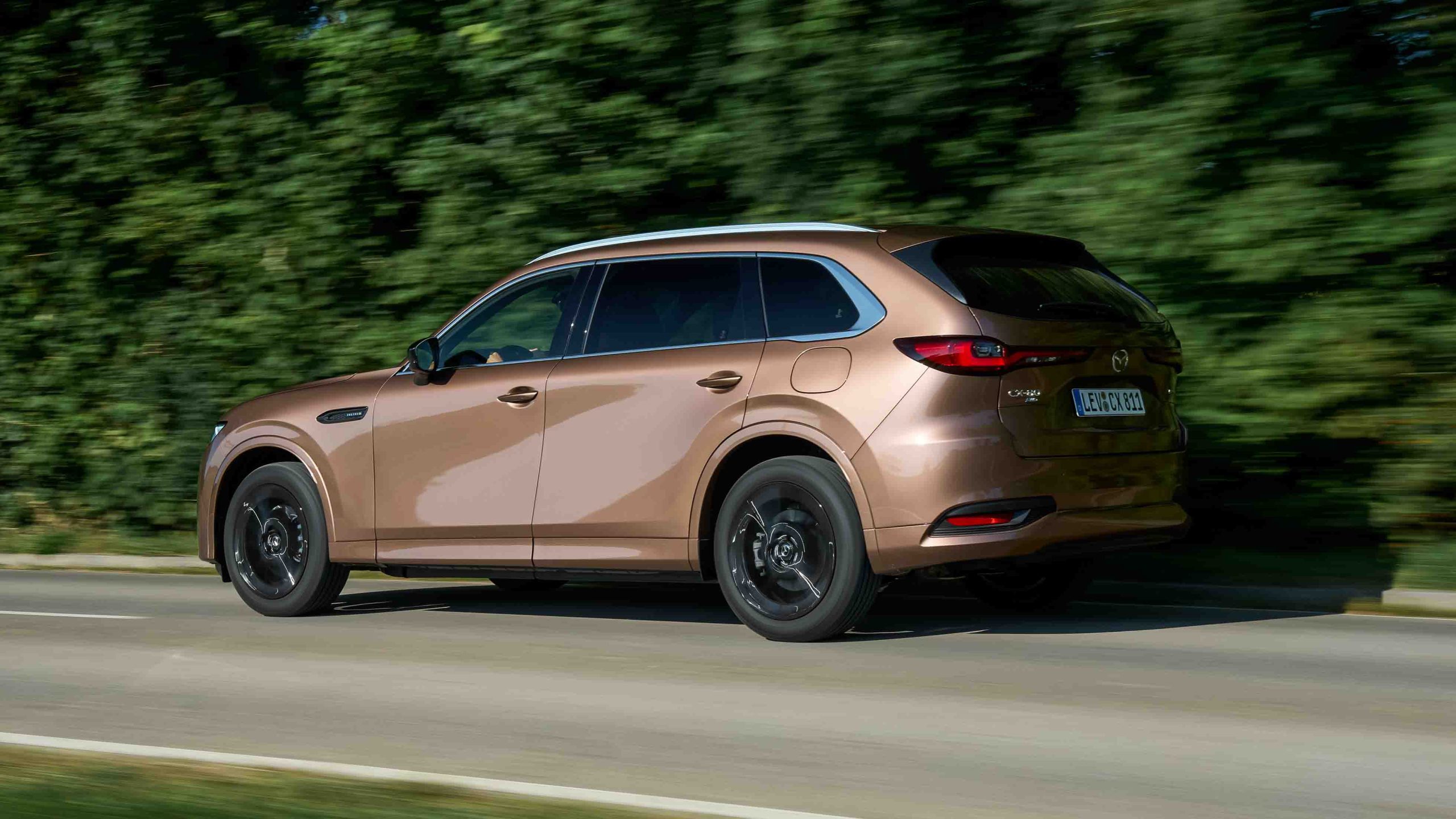
Unfortunately, we didn’t find any twisty German roads to evaluate the CX-80’s dynamic breadth, which is a shame as the suspension revisions will most certainly have an effect on roadholding and body control.
While early signs indicate the steering is still precise, with good initial turn-in, a few bends highlight increased body roll, so watch this space for a full analysis on Australian soil.
A 12.3-inch digital driver’s instrument cluster is standard, with slick graphics and a number of customisable screens to display whatever information is deemed the most useful or important.
In the plug-in-hybrid version, it provides two separate gauges for battery and fuel level, which makes it easy to see zero-emissions and low-emissions driving options at a glance.
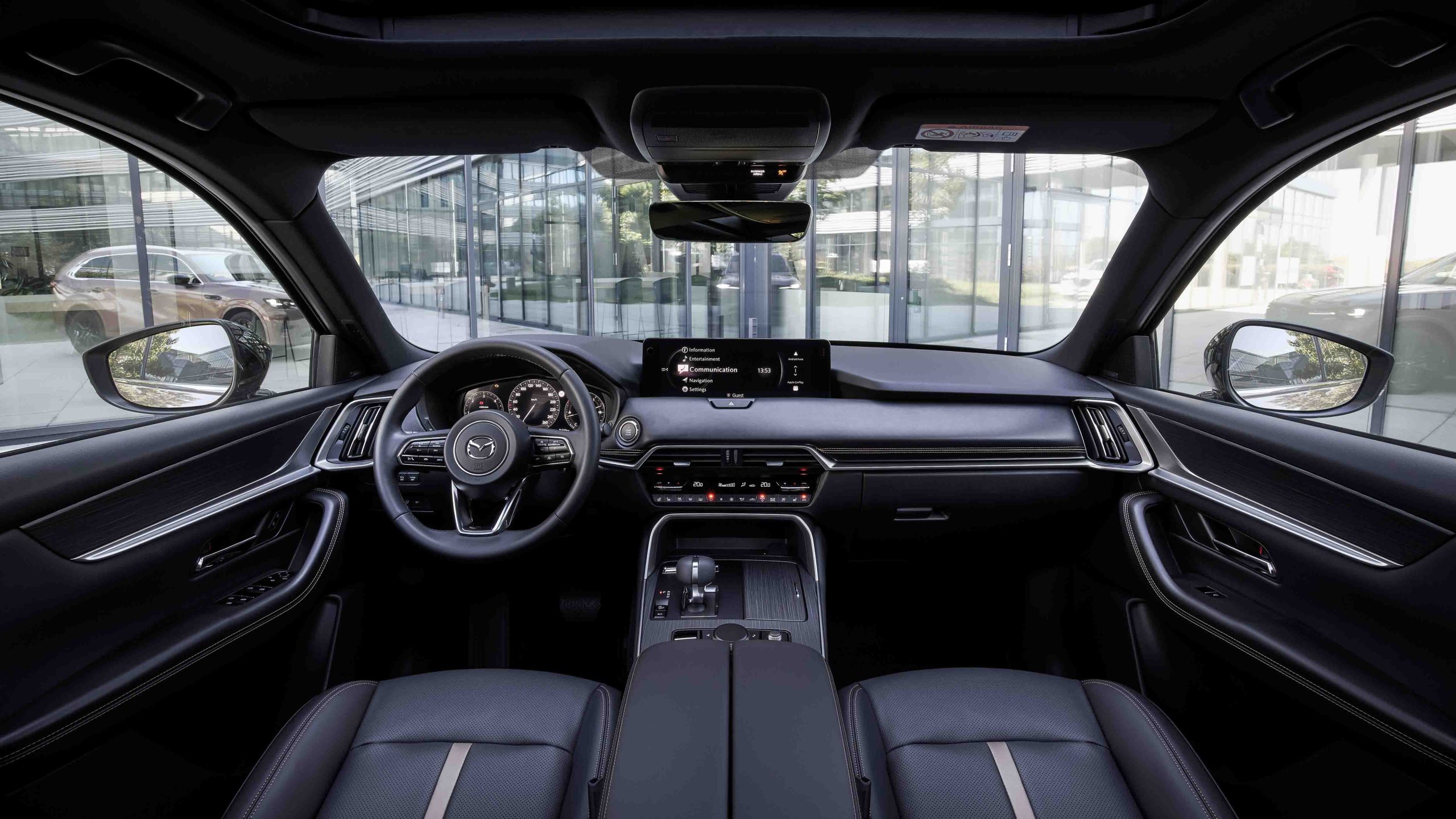
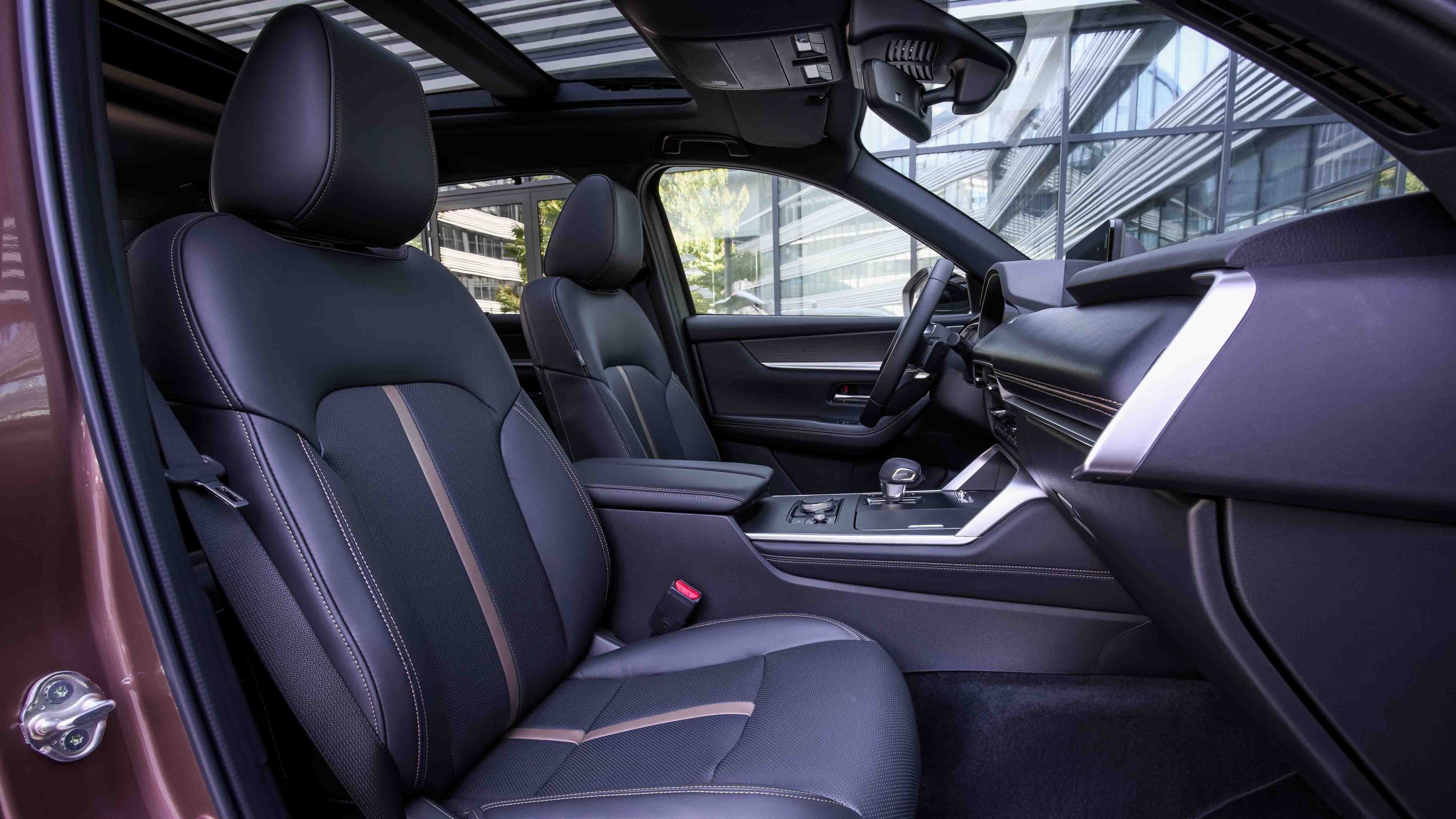
We also like the cool dynamic graphics displayed by the gauge ‘cluster’ when the driving mode is switched through one of the Normal, Sport, Off-Road, Towing and EV choices.
While the central information and entertainment screen is noticeably faster in operation compared with the previous-generation operating system, its refresh seems rather insubstantial and it’s a bit dated in appearance.
Also, the screen is not touch sensitive unless mirroring a smartphone in either wireless Android Auto or Apple CarPlay.
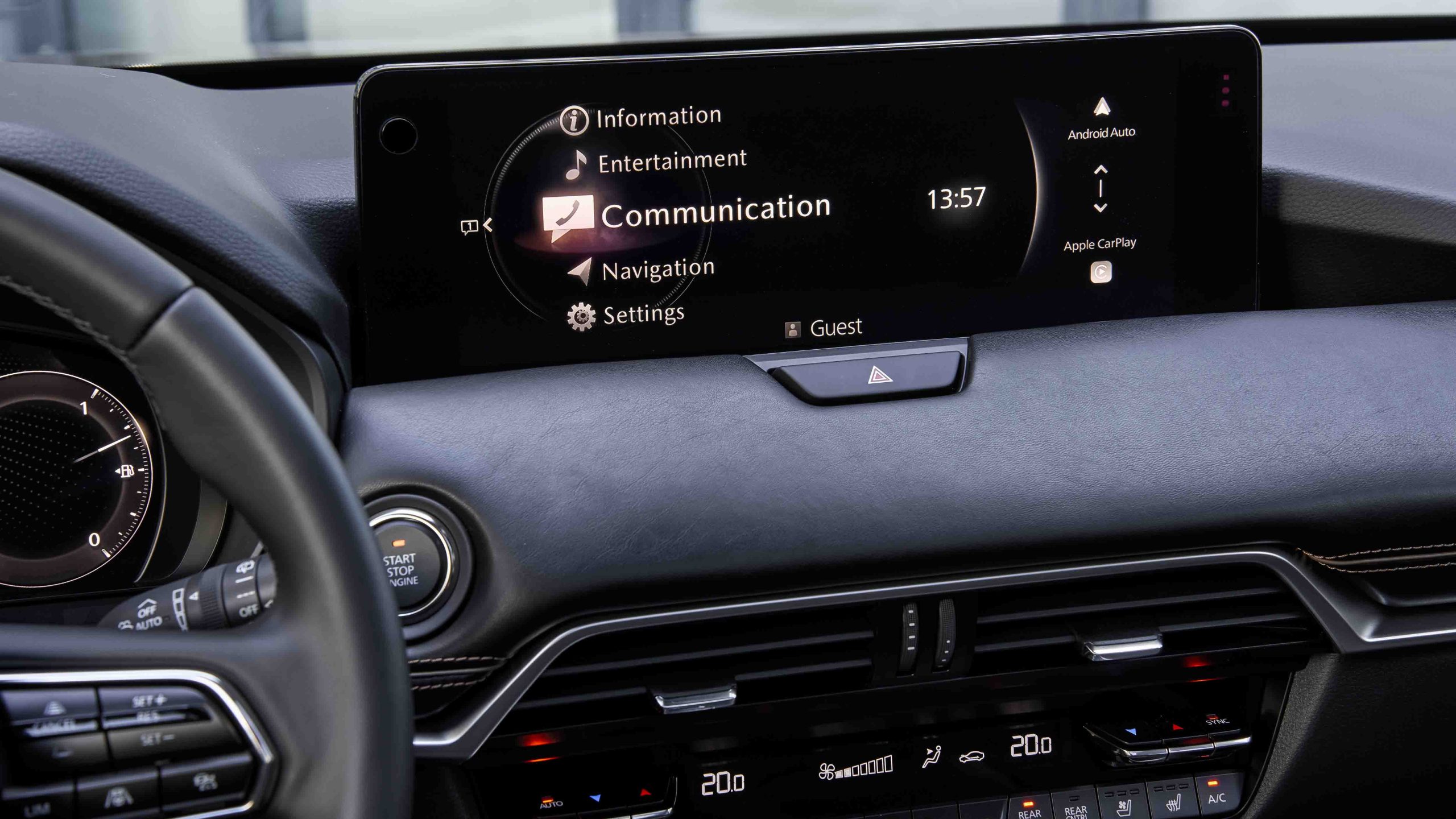
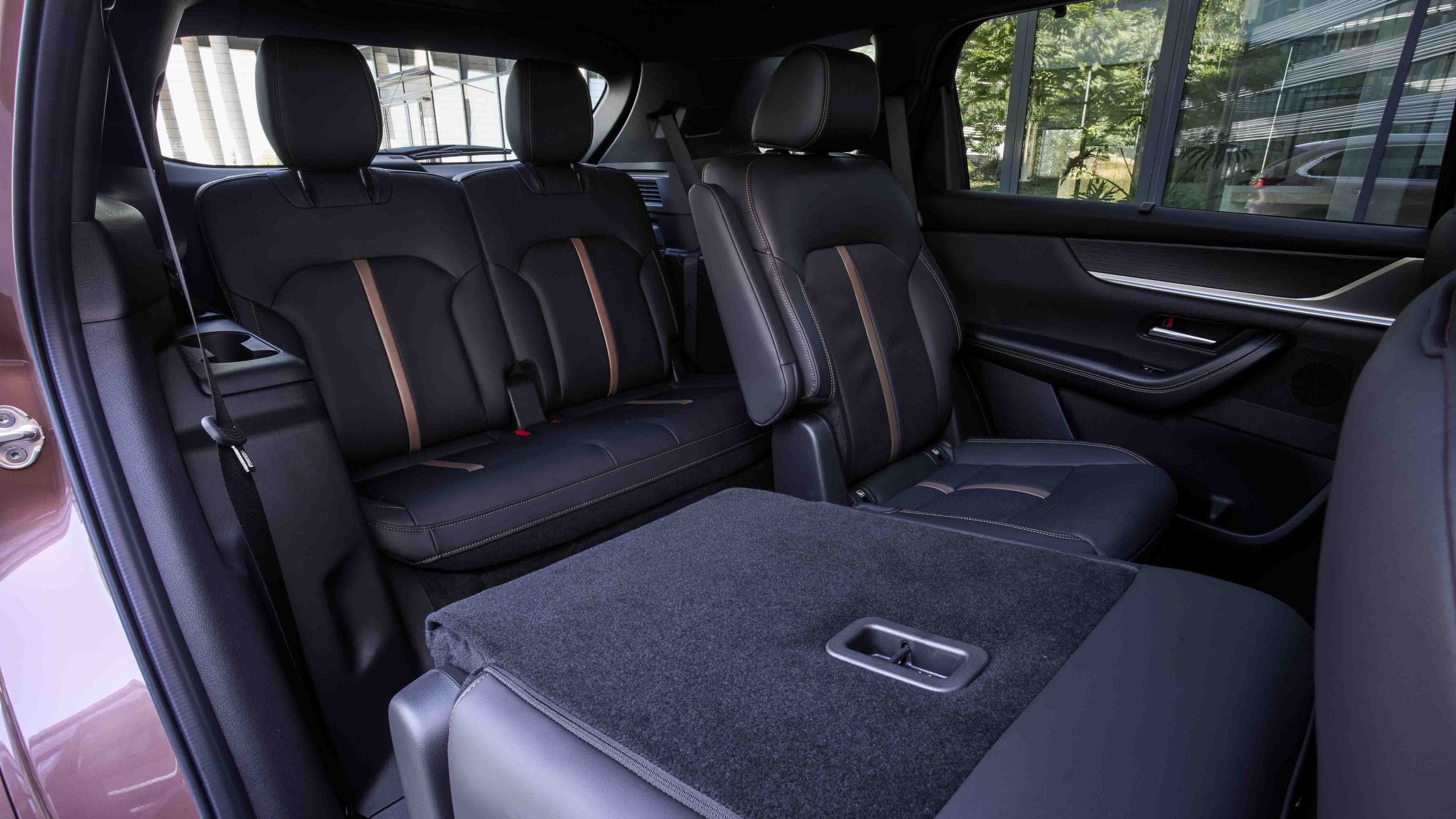
Sure, it’s likely most people will connect that way, but it’s also safe to say a good number won’t, and features such as the excellent hybrid navigation are a bit clunky to use with the central control dial.
Most of the CX-80’s stretched wheelbase can be found in the second row, with longer doors and boosted legroom.
There’s a lot of space for row-two passengers and the lengthened side windows offer an excellent view out.
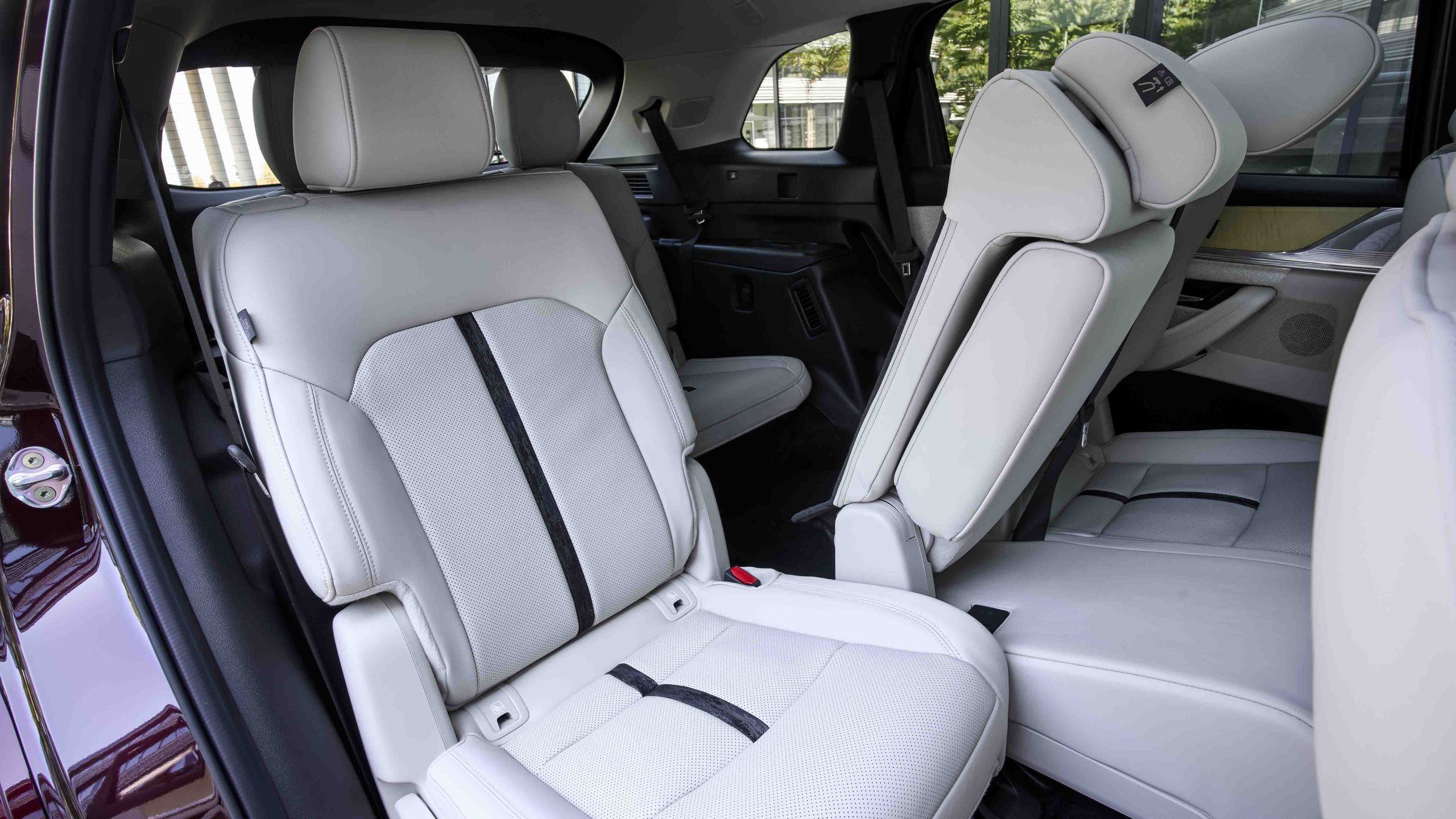
Second-row seating can be adjusted fore/aft across a 120mm range, allowing extra room in the third row for taller people or simply the maximum luxury experience in the second row.
One example we piloted had been decked out with the light and bright Takumi leather interior, with beech timber highlights and a cool dash stitching design, but after too many errant ballpoint pens and grubby children, Mazda Australia says this risky interior option won’t be offered.
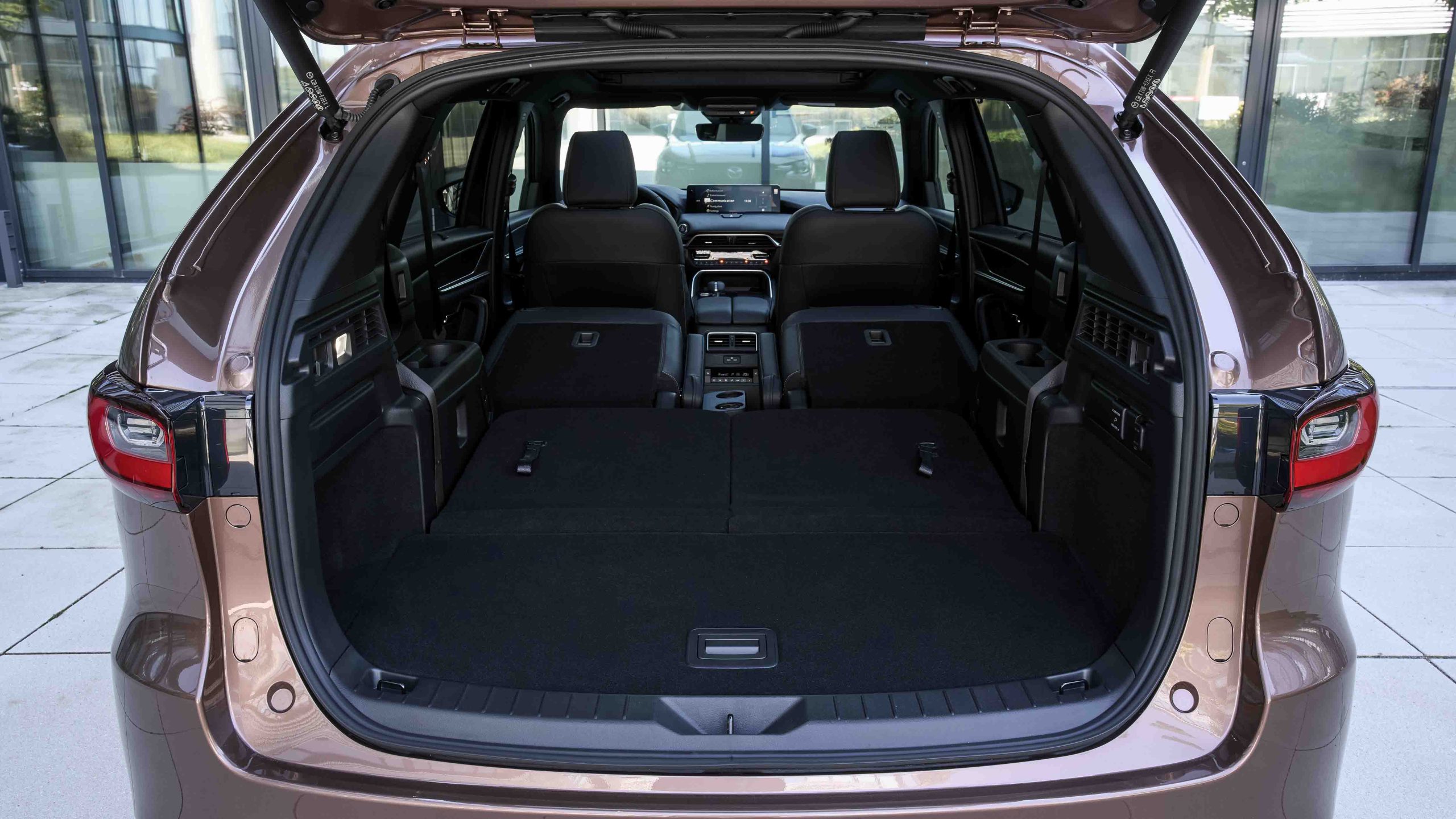
The CX-80 also features a large boot with 258 litres of space even with all three rows of seating in place, or 687 litres in the five-seat configuration.
In seven-seat versions, the second row can be stowed to release up to 1971 litres, but it’s not clear if the six-seat CX-80 can achieve the same trick with its more substantial second-row chairs.
The CX-80 has not yet been assessed by the European New Car Assessment Program (NCAP) but Mazda says: “It’s comprehensive range of advanced i-Activsense driver assistance systems ensure active safety at the highest level and targets a Euro NCAP 5-star safety rating.”
Its comprehensive suite of safety features includes adaptive cruise control with unresponsive driver assistance, emergency lane-keep assistance with head-on collision avoidance, advanced AEB with pedestrian/cyclist detection, extra protection for high-voltage system components, and 360-degree surround-view camera.
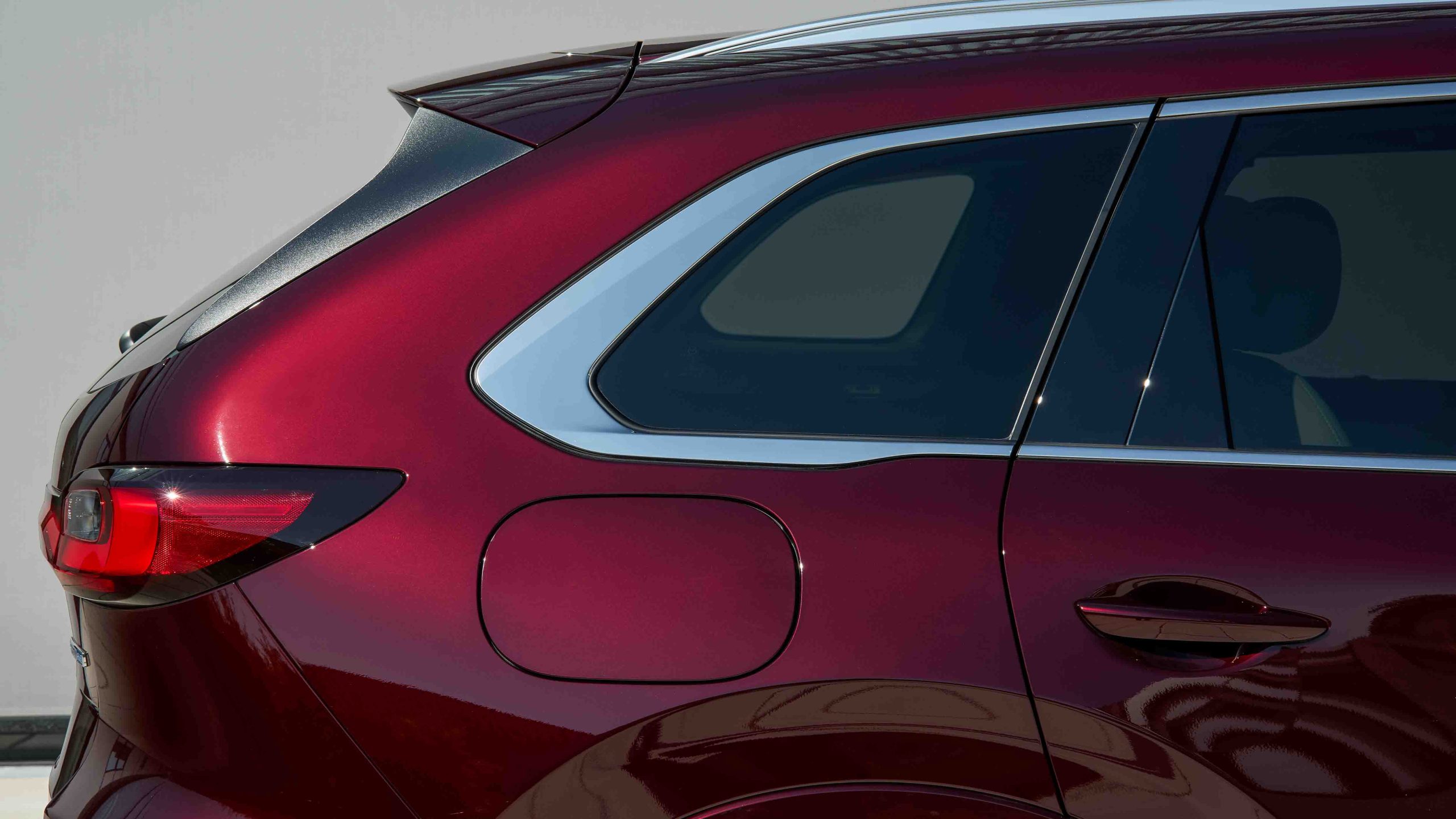
It’s worth pointing out that the closely related Mazda CX-60 scored the maximum five-star rating in ANCAP testing but lost some points because reversing AEB (back-over protection) is optional on the entry version.
Exact local CX-80 safety spec is yet to be confirmed.
Given the shared DNA of the CX-60 and CX-90, we weren’t surprised to find the CX-80 has a similarly attractive combination of strong, sporty and efficient engines, coupled to a smooth and responsive transmission.
We also love the premium interior and overall excellent levels of quality and technology which also carry over from the new-generation SUV models already on sale in Australia.
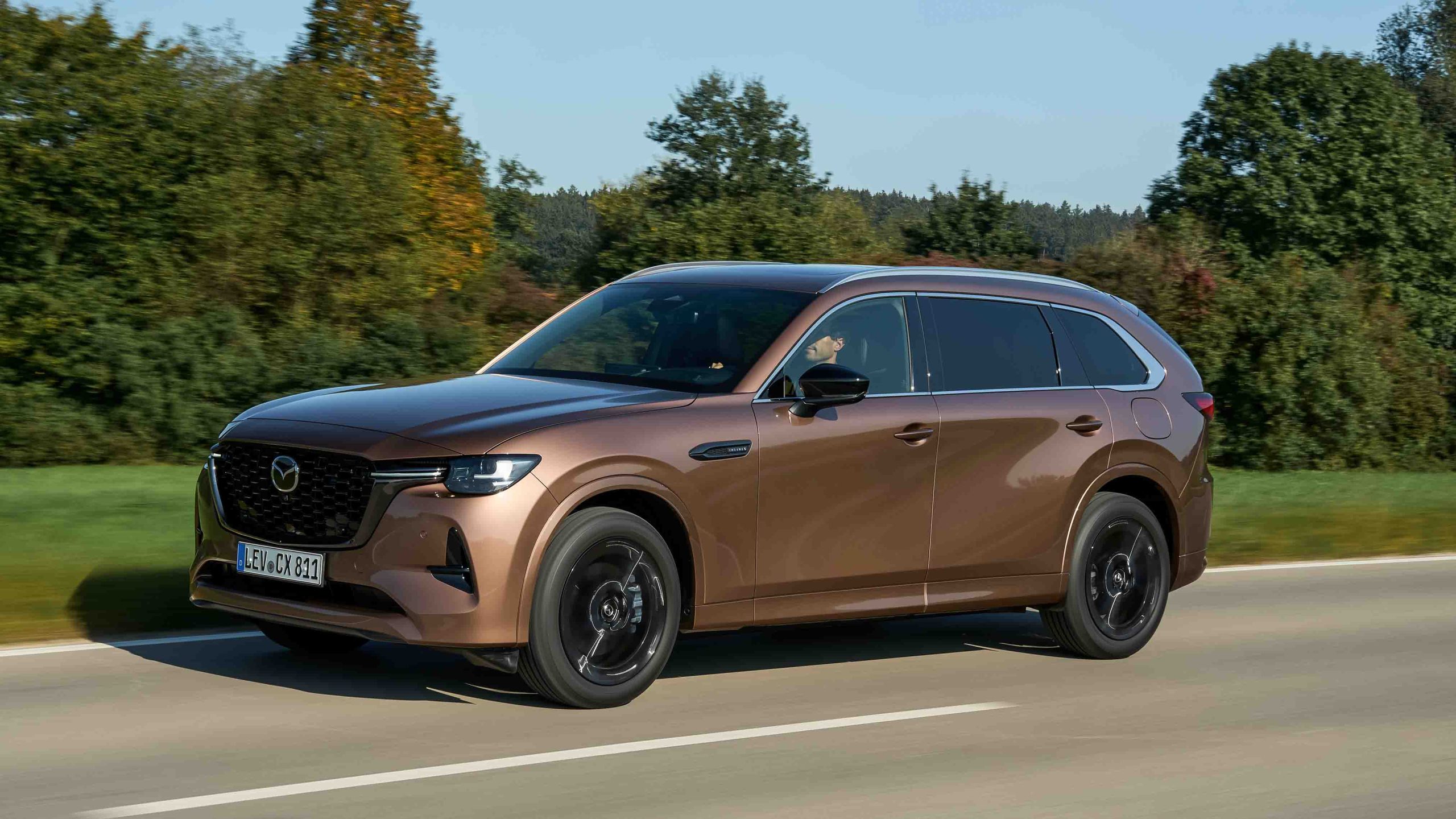
But after some criticism of the initial CX-60 and CX-90 suspension tuning when both models arrived in Australia, we’re impressed that Mazda has taken all feedback onboard and rolled out some changes for the CX-80 (as well as the related CX-60).
While the slightly fussy secondary ride is not yet completely resolved, there are significant improvements to the primary ride and overall comfort.
With the best ride of the lot, the full suite of engines to choose from, and a seven-seat cabin, this latest CX model is the most complete in a growing SUV family at the larger end of Mazda’s expansive range.
About Chasing cars
Chasing Cars reviews are 100% independent.
Because we are powered by Budget Direct Insurance, we don’t receive advertising or sales revenue from car manufacturers.
We’re truly independent – giving you Australia’s best car reviews.
The estimate provided does not take into account your personal circumstances but is intended to give a general indication of the cost of insurance, in order to obtain a complete quote, please visit www.budgetdirect.com.au. Estimate includes 15%^ online discount.
^Conditions Apply
Budget Direct Insurance arranged by Auto & General Services Pty Ltd ACN 003 617 909(AGS) AFSL 241 411, for and on behalf of the insurer, Auto & General Insurance Company Limited(ABN 42 111 586 353, AFSL 285 571).Because we don’t know your financial needs, we can’t advise you if this insurance will suit you. You should consider your needs and the Product Disclosure Statement before making a decision to buy insurance. Terms and conditions apply.
Indicative quote based on assumptions including postcode , 40 year old male with no offences, licence suspensions or claims in the last 5 years, a NCD Rating 1 and no younger drivers listed. White car, driven up to 10,000kms a year, unfinanced, with no modifications, factory options and/or non-standard accessories, private use only and garaged at night.
^Online Discounts Terms & Conditions
1. Discounts apply to the premium paid for a new Budget Direct Gold Comprehensive Car Insurance, Third Party Property Only or Third Party Property, Fire & Theft Insurance policy initiated online on or after 29 March 2017. Discounts do not apply to optional Roadside Assistance.
2. Discounts do not apply to any renewal offer of insurance.
3. Discounts only apply to the insurance portion of the premium. Discounts are applied before government charges, taxes, levies and fees, including instalment processing fees (as applicable). The full extent of discounts may therefore be impacted.
4. We reserve the right to change the offer without notice.